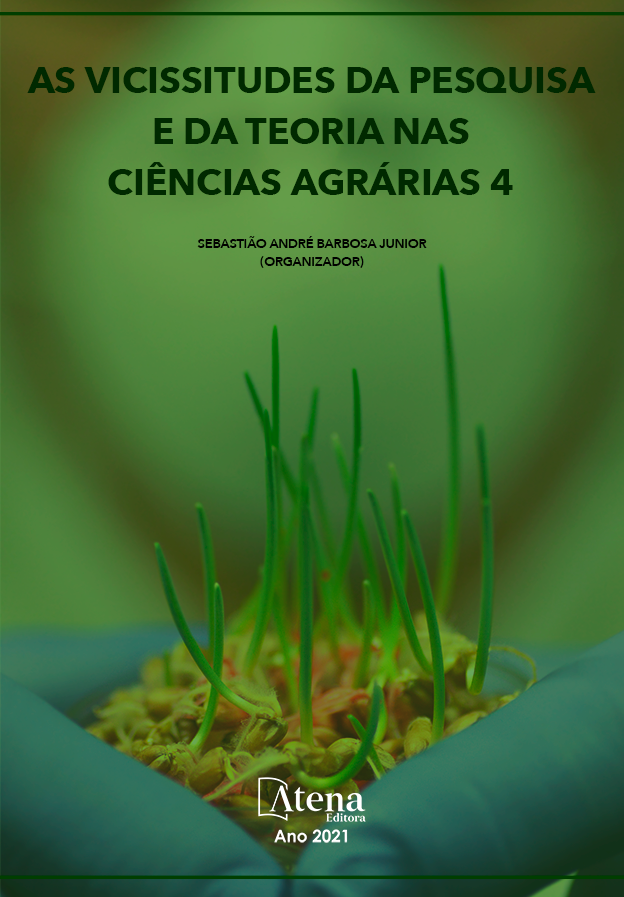
USOS E CARACTERIZAÇÃO DE PLANTAS ALIMENTÍCIAS NÃO CONVENCIONAIS (PANC) EM ASSENTAMENTOS RURAIS NO SUDESTE PARAENSE
O objetivo com esse trabalho foi analisar o uso de PANC pelos agricultores residentes em três assentamentos rurais do Sudeste Paraense e caracterizá-las quanto ao hábito de crescimento, modo de exploração, ambientes de ocorrência, formas de uso, além de realizar a identificação botânica dessas plantas. O trabalho foi desenvolvido em três assentamentos rurais situados na mesorregião do Sudeste Paraense: Assentamento Três Ilhas e o Projeto de Desenvolvimento Sustentável (PDS) Porto Seguro, situados no município de Marabá-PA, e o Projeto de Assentamento Agroextrativista (PAE) Praia Alta - Piranheira, situado no município de Nova Ipixuna-PA. A coleta de dados foi feita através de entrevistas semiestruturadas no período de junho a agosto de 2018. Utilizou-se também as técnicas de turnê-guiada e listagem livre. Foram identificadas 64 espécies pertencentes a 30 famílias, as famílias mais citadas foram Arecaceae, Fabaceae e Myrtaceae. As espécies mais citadas foram a bacaba (Oenocarpus bacaba Mart.), o jatobá (Hymenaea courbaril L.), o inajá (Attalea maripa Aubl. Mart.) e o uxi (Endopleura uchi Huber Cuatrec.). Quanto ao hábito de crescimento, mais da metade das espécies (33) possuem porte arbóreo, a forma de consumo predominante é in natura, 41% das espécies ocorrem nos quintais e são exploradas através da coleta. Verificou-se que muitas PANC ocupam um lugar importante na dieta alimentar das famílias e as informações obtidas demonstram uma grande possibilidade de que essas espécies possam ser utilizadas na diversificação das atividades dos agricultores familiares.
USOS E CARACTERIZAÇÃO DE PLANTAS ALIMENTÍCIAS NÃO CONVENCIONAIS (PANC) EM ASSENTAMENTOS RURAIS NO SUDESTE PARAENSE
-
DOI: 10.22533/at.ed.43421230219
-
Palavras-chave: Etnobotânica, conhecimento tradicional, biodiversidade.
-
Keywords: Ethnobotany; traditional knowledge; biodiversity.
-
Abstract:
The paper’s purpose was to analyse the PANC’s use by farmers living in three rural settlements’ southeastern Pará, and characterize them as to growth habit, exploration mode and occurrence environments, their uses forms, besides to carry out the plants’ botanical identification. The work was developed in three rural settlements’ located in the Southeast Pará mesoregion: Três Ilhas’ Settlement’s, Sustainable Development Project (Projeto de Desenvolvimento Sustentável or PDS) Porto Seguro, located in a town called Marabá-PA, and the Agroextractivist Settlement´s Project (Projeto de Assentamento Agroextrativista or PAE) Praia Alta – Piranheira, located in the town called Nova Ipixuna-PA. The data collection was done through semi-structured interviews in the period from June to August 2018. It was also used the tour-guided and free listing techniques. Sixty-six species belonging to 30 families were identified, the families most cited were Arecaceae, Fabaceae e Myrtaceae. The most frequently cited species were bacaba (Oenocarpus bacaba Mart.), jatobá (Hymenaea courbaril L.), inajá (Attalea maripa Aubl. Mart.) and uxi (Endopleura uchi Huber Cuatrec.). About the grouth habit, more than half of the species (33) have sized arboreal, the predominant form of consumption is in natura, 41% of the species occur in backyards and are exploited by collecting. It was found that many PANC occupy an important place in the families’ diet and the information obtained demonstrate a high possibility that these species can be used to diversify the sources of income of family farmers.
-
Número de páginas: 10
- Diego de Macedo Rodrigues
- Leonardo Afonso Pereira da Silva Filho
- Adriana Sá Sampaio de Morais
- Ângela Cristina Lopes da Silva
- Rita de Cássia Costa Araújo
- Crislei Trindade Farias


